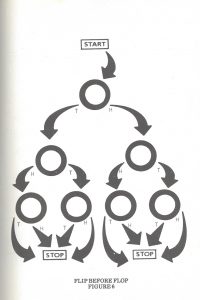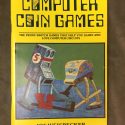It’s common cents: using pennies to explain computer circuitry
In 1979, Creative Computing Press of Morristown, NJ published Computer Coin Games, a booklet written by Joseph Weisbecker, an RCA computer development engineer with a passion for education. Creative Computing, the brainchild of David Ahl, was a magazine dedicated to the microcomputer revolution, and its press published several books and games dedicated to help children understand the basics of computing.[1] Weisbecker’s passion for computer pedagogy fit in well at Creative Computing, although he would later go on to create his own company, Komputer Pastimes, which also produced computer game books (for more on Weisbecker, see his biography at the Hagley Museum). Weisbecker’s interest in computer education and low-cost computing was concurrent with his work at RCA for a computer concept he called the Flexible Recreational and Educational Device, or FRED. The FRED concept would go through a number of designs and iterations, but it was the intellectual predecessor of the RCA COSMAC. FRED wasn’t a toy like Weisbecker’s other products, but books like Computer Coin Games were early, non-electronic versions of FRED.[2]
The idea for Computer Coin Games began when Weisbecker tired to explain to children (without much success) how a computer worked. He decided to illustrate the process using a simple flip-flop switch, the most common circuit in a computer. With a penny representing the switch, he demonstrated how every time the circuit received an impulse, it would flip, represented by the penny going from heads to tails, or from tails to heads. It was, by his account, a big hit with the kids. [3] “Everyone likes games,” he wrote in the introduction to the prototype, but “not everyone has the interest or patience required to understand the operation of binary computer circuits.”[4] Computer Coin Games was meant to solve this problem, and use the entertainment appeal of games for an educational end.

Computer Coin Games consisted of a series of games meant to teach its readers how simple computer circuits worked, using nothing but pennies (though “affluent readers may prefer dimes”[5]). When Creative Computing printed it in 1979, the book was divided into two parts: the first promised “a variety of fascinating games which can be played by anyone,” while the second explained how the games related to computers. To add to its appeal, it was engagingly illustrated by Sunstone Graphics, a firm that had done other work for Creative Computing. Unlike what we might think of when we hear the words ‘computer game,’ however, these games were meant as teaching aids for binary numbers and computer circuits. Computer Coin Games, Weisbecker wrote, was “based on what happens inside computers and not on what they can do.”
So, how does one play a computer coin game? First, we’ll explain how a penny switch network works. Pennies are put into all of the circles in a diagram, and the player traces through the network from the START, flipping the first penny over. If it ends up on heads, then the player follows the arrow labeled H, or T for tails. The player traces the pennies all the way down until the STOP. Now, for the fun part! Let’s play Flip Before Flop. To play along, you’ll a printout or copy the diagram below, seven pennies, and a friend. The object of the game is to get all seven pennies back to the original heads up position. Start by putting pennies in all the circles, heads up. On each turn, a player can trace through the network either once or twice, and the player who gets all seven coins heads up at the end of her turn wins the game. Good luck!

The Sarnoff Collection holds both Weisbecker’s hand-made prototype (S.226.13) and the published version (S.226.21), part of a larger collection at the Sarnoff of his hand-built games.

Text by Florencia Pierri
References:
[1] John J. Anderson, “Dave Tells Ahl—The History of Creative Computing,” in Creative Computing, Vol. 10, no. 11, 1984: 69-79.
[2] Zbigniew Stachniak, Inventing the PC: The MCM/70 Story, (Montreal McGill-Queen’s University Press 2014), 32-34.
[3] “The most complex computer circuit can be eItxplained with just nine cents,” Creative Computing Catalog 8, 11.
[4] Joseph Weisbecker, Computer Coin Games prototype, Sarnoff Collection, S.226.13.
[5] Computer Coin Games prototype.

